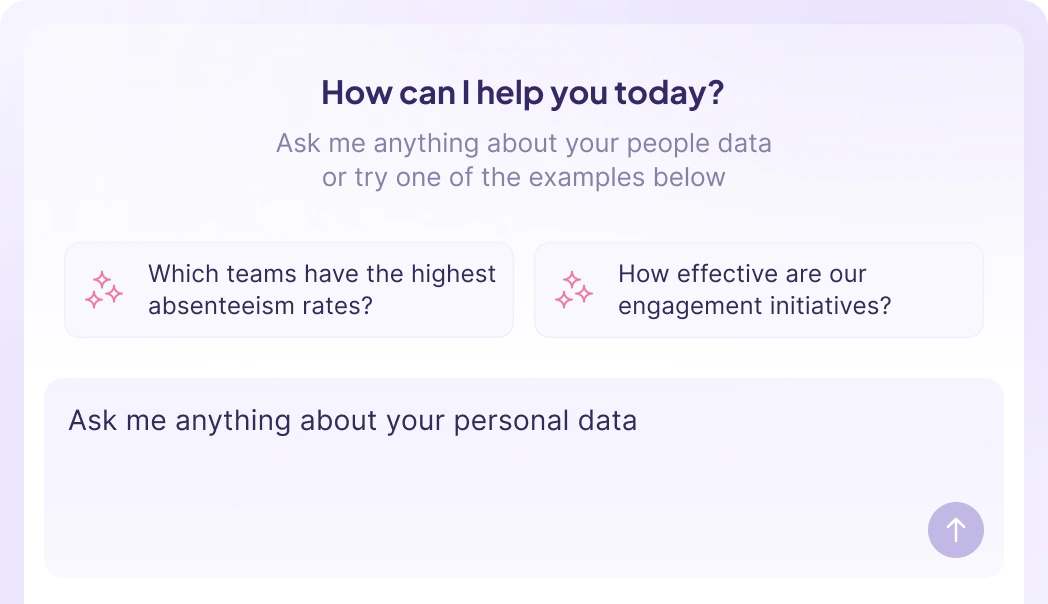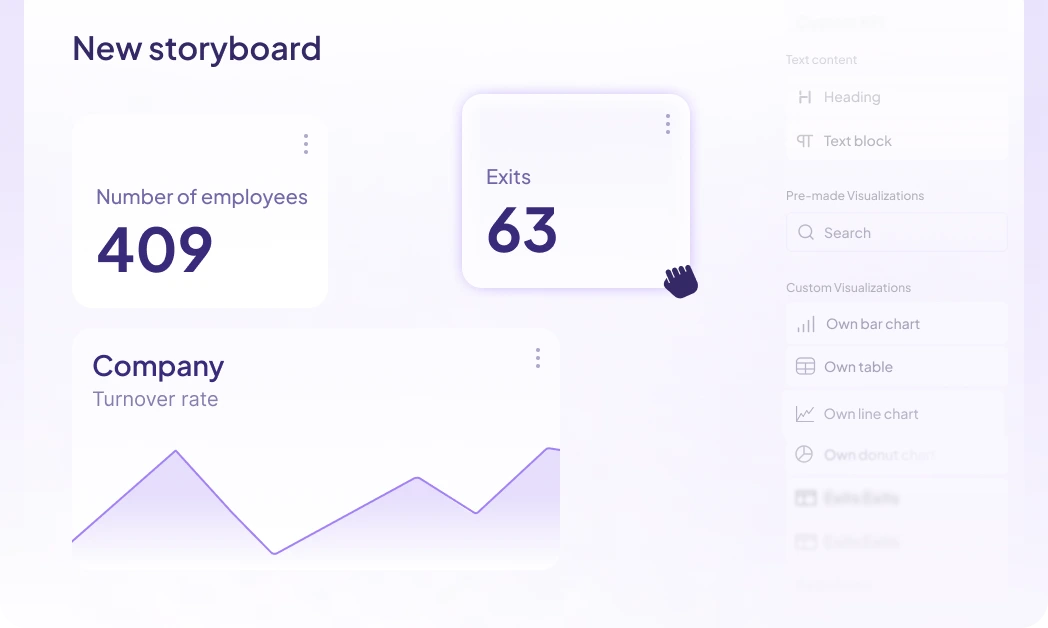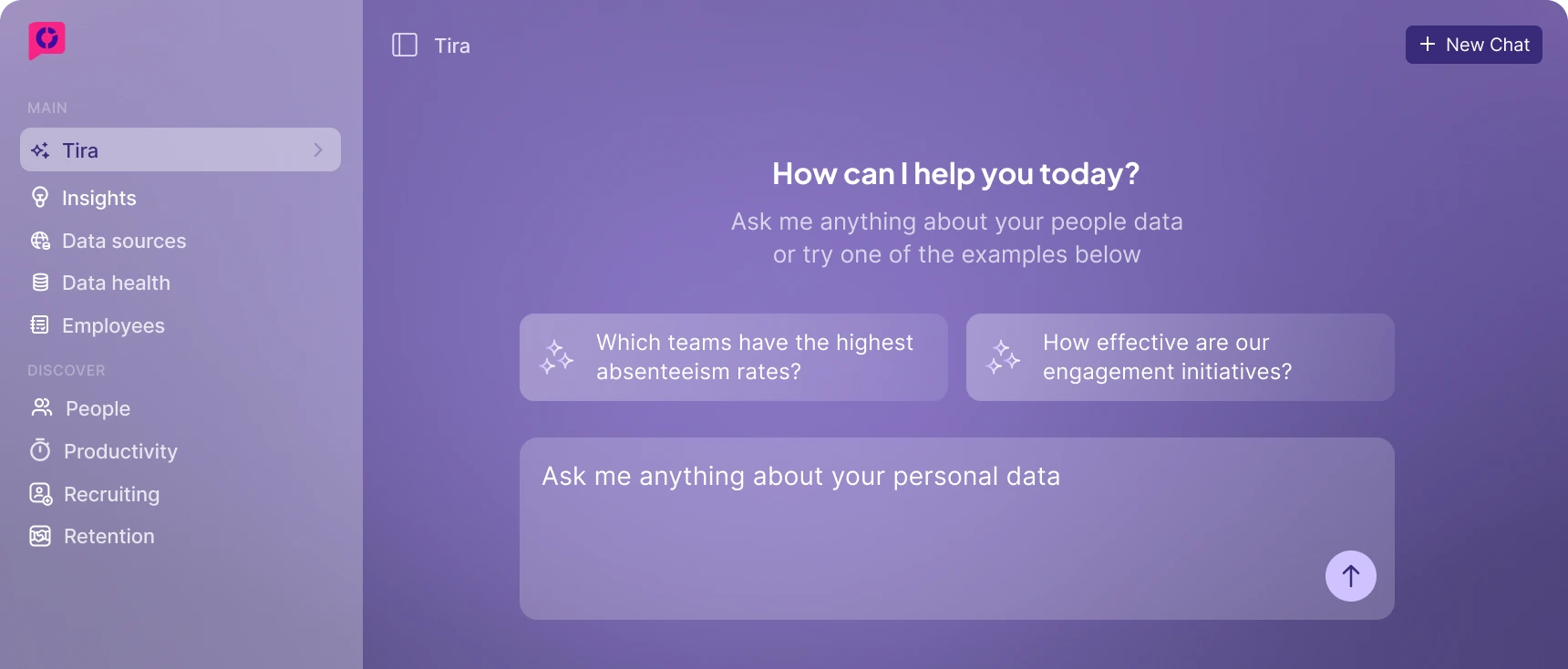.webp)
People Analytics Software
Empower your People team with an AI-powered data analyst
The leading People Analytics software for data-driven HR teams
— with our People Analytics software.
Join
People Intelligence with peopleIX





.webp)



.webp)


.webp)
With peopleIX, we finally have all of our HR data in one place. We've moved from manual data processing and ad-hoc reporting to real-time decisions.

Let’s bridge the gap between HR and the C‑level #PeopleDataImpact
"We constantly see great HR work go unrecognized. There's no budget for crucial initiatives—because the data isn’t there. On top of that, poor decisions lead to high hidden costs.
With peopleIX, we empower People teams with the tools they need to unlock the full operational and strategic potential of HR."
Without analytics, HR remains stuck in a support role.
No measurable added value
Your data is scattered across many systems, and you lack the time for deep analysis.
Tight budgets
Your impact isn’t visible, so crucial initiatives don’t get funded.
Too few resources
You can’t optimize your employee lifecycle.
Low Influence
HR is not part of strategic communication, leading to continued hidden costs.
All data in one place
You gain a holistic overview of the entire employee lifecycle.
Real-time insights
Get clear analysis for data-driven decisions — at the push of a button.
Real business impact
Identify risks early and finally communicate strategically to secure success.

With peopleIX, we were able to significantly increase the quality of our data, especially in recruiting, and thus react faster and more data-informed to changes in recruiting. Over the last few months, we have been able to identify a number of initiatives that have helped us attract good talent more quickly.
People Data that actually drives Impact
All your people data in one place
peopleIX integrates data from 100+ HR tools so you can see patterns and launch impactful people initiatives—from recruiting to retention. Data quality checks included.
Use the built-in AI data analyst to get quick answers, track KPIs, or dive deep into your data. Every insight is transparent and explainable.






Our integrated Insights Engine analyzes and visualizes your People data so you can detect turnover risks or improve hiring quality—no analytics expertise needed. This gives you instant transparency across your entire employee lifecycle at the push of a button.

We are able to generate well-founded analyses along the employee life cycle and can thus drive forward strategic HR work together with managers! The storyboards for managers in particular are a game changer!
No big IT project. Fast results.
"Quick integration with our HR tool landscape, strong data quality features – insights from day one!"
— Michael Schmidt, Head of HR
From data to insights in under 30 days
What’s holding you back from finally using your data?
Is my data secure?
Made in Germany. Fully GDPR-compliant. Your data is safe with peopleIX.
Are analysis accurate and traceable?
Automatic data checks, permissions management, and transparency behind every analysis make everything verifiable.
Aren’t you just a small startup?
€2.3M pre-seed funding, 30+ renowned clients, and a strong team. We get the most out of your data.
What if we need help?
Our Customer Success Team is always just one email or Slack message away.
But we already have HR software!
Perfect! peopleIX integrates seamlessly with your systems and takes them to the next level.
How is your AI integrated?
Our AI is aligned with the EU AI Act and never trains on your data. Your platform, your data.
What does data-driven HR deliver? Real results, real customers.#People DataImpact

Potential cost savings for internal development ≥€10k
"We were able to see all the data and analysis in real-time within a few weeks that would have otherwise taken us several months."

Implement and measure KPIs
We are able to generate well-founded analyses along the employee life cycle and can thus drive forward strategic HR work together with managers! The storyboards for managers in particular are a game changer!



.webp)







.webp)